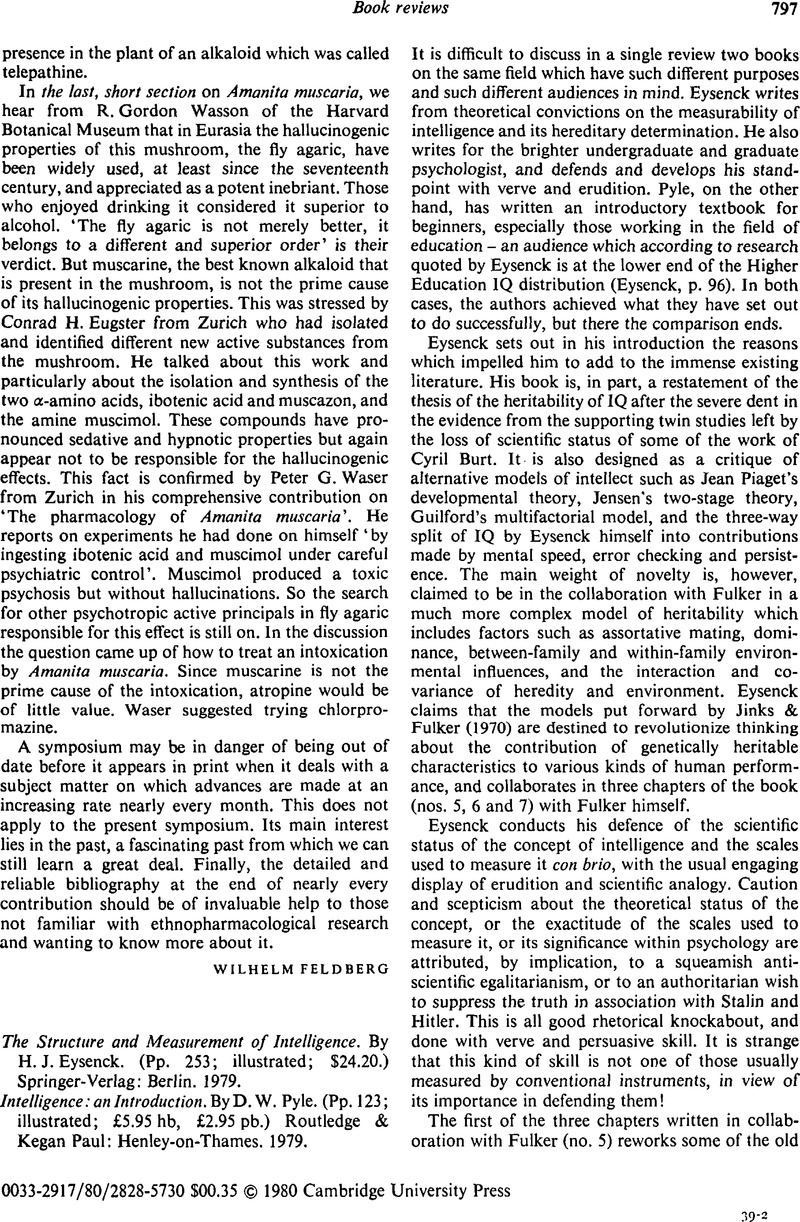No CrossRef data available.
Article contents
The Structure and Measurement of Intelligence. By H. J. Eysenck. (Pp. 253; illustrated; $24.20.) Springer-Verlag: Berlin. 1979. - Intelligence: an Introduction. By D. W. Pyle. (Pp. 123; illustrated; £5.95 hb, £2.95 pb.) Routledge & Kegan Paul: Henley-on-Thames. 1979.
Published online by Cambridge University Press: 09 July 2009
Abstract
An abstract is not available for this content so a preview has been provided. Please use the Get access link above for information on how to access this content.

- Type
- Book Reviews
- Information
- Copyright
- Copyright © Cambridge University Press 1980
References
REFERENCES
Husèn, T. (1959). Psychological Twin Research: a Methodological Study. Almquist and Wicksall: Stockholm.Google Scholar
Jenks, C. (1972). Inequality: A Reassessment of the Effect of Family and Schooling in America. Basic Books: New York.Google Scholar
Jinks, J. L. & Fulker, D. W. (1970). Comparison of the biometrical genetical MAVA, and classical approaches to the analysis of human behaviour. Psychological Bulletin 73, 311–349.CrossRefGoogle Scholar
Loehlin, J. C. & Nichols, R. C. (1976). Heredity, Environment and Personality. University of Texas Press: Austin.Google Scholar
Taubman, P. (1976). The determinants of earnings: genetics, family and other environments: a study of white male twins. American Economic Review 66, 858–870.Google Scholar




